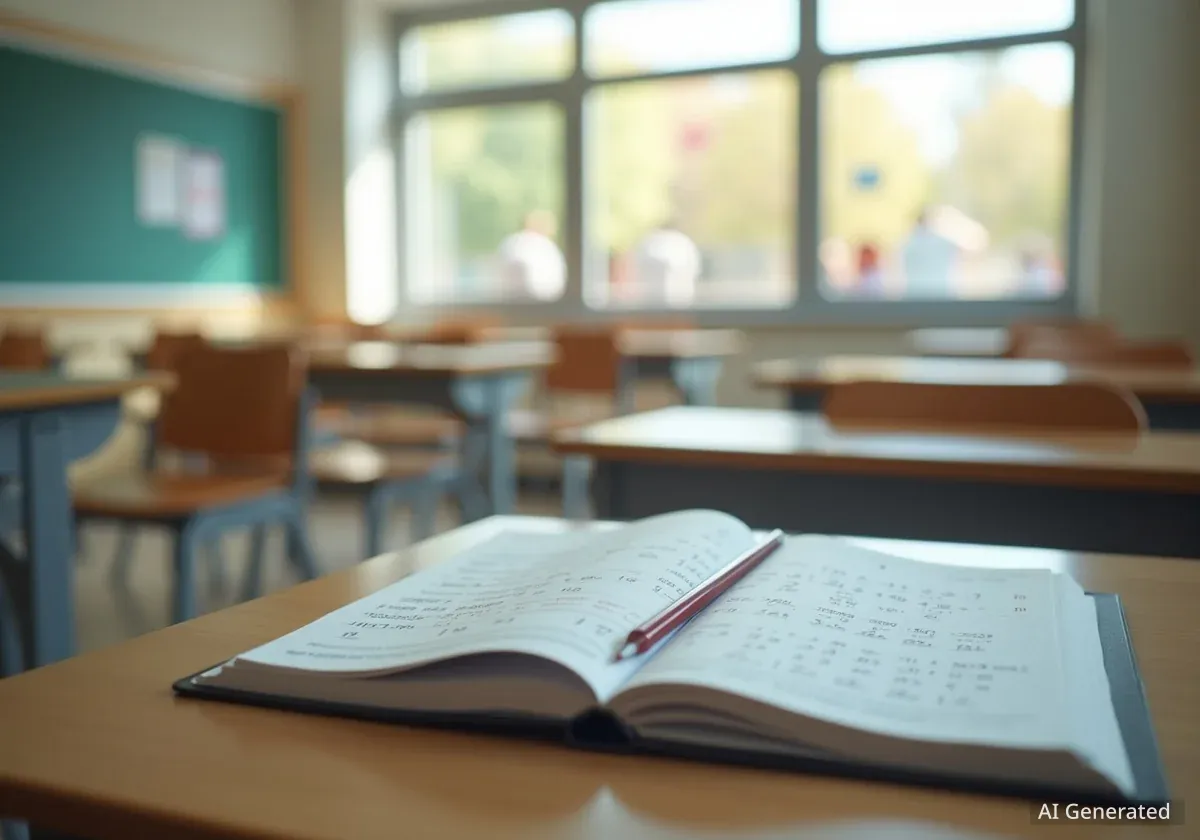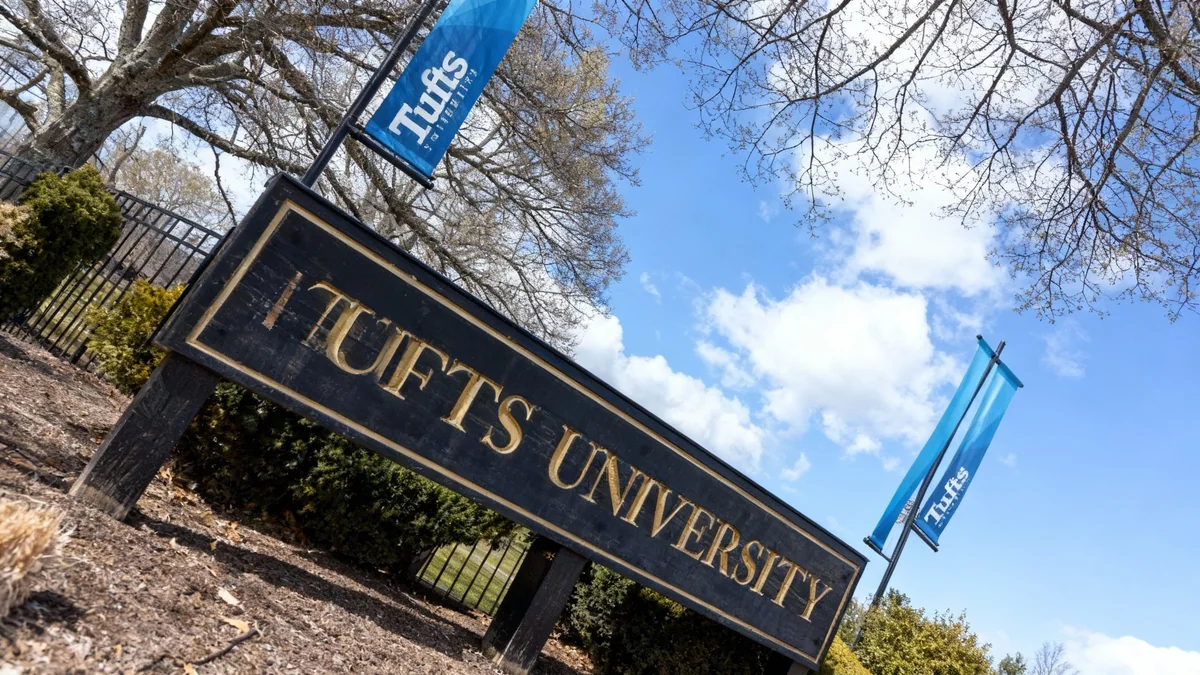Fairfax County Public Schools has launched a pilot program that dramatically expands access to high school-level Algebra I for sixth-grade students. Over 700 elementary school students are now enrolled in the advanced course, a significant increase from previous years when only a handful of students participated.
The initiative aims to provide an accelerated pathway for students who have demonstrated advanced proficiency in mathematics, preparing them for future opportunities in science, technology, engineering, and math (STEM) fields.
Key Takeaways
- Over 700 sixth-graders in Fairfax County Public Schools are taking Algebra I, a high school course.
- This is a substantial increase from the previous average of about 30 students per year.
- The pilot program is available in over one-third of the district's elementary schools.
- Students qualify based on advanced scores on state and district math assessments.
- Educators are addressing the challenge of skipping two grade levels of math by integrating key concepts from 7th and 8th grade into the curriculum.
A Major Shift in Advanced Math Access
A new pilot program in Fairfax County is changing the landscape of early math education. This school year, the district has enrolled more than 700 sixth-grade students into Algebra I, a course traditionally taken in high school. This marks a significant expansion of advanced learning opportunities at the elementary level.
Previously, taking Algebra I in sixth grade was a rare occurrence within the district. On average, only about 30 students across all 142 elementary campuses were enrolled in the course each year. The limited access was partly due to the county's middle school structure, which typically serves only seventh and eighth graders.
By the Numbers
The number of sixth-graders in Algebra I has surged from an average of 30 to over 700 students, representing a more than 2,200% increase under the new pilot program.
Qualification and Program Goals
To be eligible for the program, students must meet specific academic criteria. Participants are required to have earned a “Pass Advanced” score on the sixth-grade Virginia Standards of Learning (SOL) math test while they were still in fifth grade. They also need to achieve certain scores on other standardized math assessments.
Amanda Blevins, a sixth-grade Algebra I teacher at Mosaic Elementary, noted the program's long-term benefits. “They’re taking several years ahead, which is great, because a lot of them have expressed interest in STEM careers later down the line,” she said. “Getting a head start on some of these higher level math concepts sets them on a path to advanced math as they get into middle school and high school.”
Inside the Accelerated Classroom
In Amanda Blevins' classroom, 23 sixth-graders work through problems involving exponents and the order of operations. The students actively participate, explaining their methods for solving complex equations projected at the front of the room. The learning environment is dynamic, with students solving problems on papers posted around the classroom walls while Blevins works with small groups at whiteboards.
Bridging the Knowledge Gap
A primary challenge for educators in the program is ensuring students don't miss foundational concepts from the math courses they are skipping—specifically, pre-algebra topics typically taught in seventh and eighth grade. This requires a modified approach to teaching the high school-level curriculum.
Blevins explained the strategy for addressing this potential gap. The curriculum is designed to incorporate essential pre-algebra skills before moving into more advanced topics.
“We’ve been front-loading a lot of the seventh and eighth grade concepts, and we’re trying to sprinkle that in as we get into the Algebra units too,” Blevins said.
This approach ensures that while students are accelerated, they still build the necessary foundation for success in higher mathematics.
Student and Parent Perspectives
The transition to a high school-level course has been met with a mix of excitement and apprehension from students. Mason Lee, a student in the program, shared his initial feelings. “I was really excited and I was kind of worried,” he said. “Because it’s like a high school program, but I’m only in elementary school.”
Despite his initial concerns, Lee has found his footing. “I was worried that maybe I wouldn’t do so well as I’d done before, but I’ve been able to keep up pretty well so far,” he added, noting that he believes the class “could help me get into maybe a good college.”
Motivated by a Challenge
For other students, the program offers a welcome challenge. Yesaswini Perneti Mohan, who aspires to be a neurosurgeon, sought out the class after finding previous math courses to be “really easy.” She described the Algebra I course as being at an ideal difficulty level. “It’s what I expected. It’s not that easy or hard. It’s in the middle range,” she commented.
Another student, Gavin Wang, is an aspiring mathematician who actively seeks out difficult problems. He said that whenever possible, “I try to do something that involves harder math.” The program provides him with the rigorous coursework he desires.
Administrative Support and Positive Outcomes
Implementing the program was a significant undertaking for school administrators. Mahri Aste, the principal at Mosaic Elementary, described offering the course as a “heavy lift.” She also acknowledged that some parents were initially nervous about their children taking on such an advanced course load at a young age.
However, the results have been overwhelmingly positive. According to Aste, the students have embraced the opportunity and are showing a renewed passion for the subject.
“It’s been very, very positive,” Aste stated. “The kids are excited about math. They love it.” This enthusiasm suggests that the pilot program is successfully meeting the needs of the district's high-achieving young mathematicians.





